Earth Perspectives
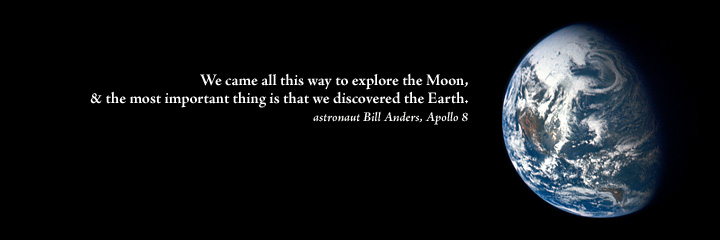
NASA astronaut photograph AS10-34-5036.
- by Holli Riebeek
- design by Robert Simmon
- November 24, 2008
Say NASA, and many images may come to mind: a white-clad man leaping awkwardly, joyfully across the surface of the moon; probes gliding into the depths of the solar system, sending back pictures of distant worlds; two tenacious robots exploring the red rock surface of Mars, uncovering evidence of a wet past; the horrifying disintegration of the Challenger and Columbia space shuttles.
For some, another image comes to mind: a tiny blue and white planet, a fragile oasis in the black vastness of space. Recalling his thoughts while orbiting the Moon during the landmark Apollo 8 mission, astronaut Bill Anders said, “We came all this way to explore the Moon, and the most important thing is that we discovered the Earth.” (Quoted in The Societal Impact of Space Flight, p.55.)
Venturing into space has taught us about our Sun, solar system, and the universe beyond, but it has also given us a new perspective on our home planet, Earth. In 2008, as NASA celebrates 50 years of existence as an agency and 40 years since man first left Earth’s orbit, the Earth Observatory asked a number of Earth scientists what unique insights space flight has given us about Earth. Some emphasized revolutionary technology, others mentioned specific discoveries and observations of important Earth events, while others highlighted the power of satellite images to make us understand the interconnectedness of people and places around the globe. A selection of their responses follows.
Piers Sellers
Biospheric scientist and astronaut
Piers Sellers remembers admiring the intricate details visible from the orbiting space shuttle. “It was like someone spent forever building a tiny model.” He was surprised by the thinness of the atmosphere, a delicate mist glued to Earth’s surface, and delighted in seeing the edges of the clouds curl up towards space, something that isn’t obvious in two dimensional satellite images.
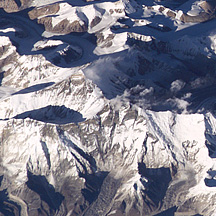
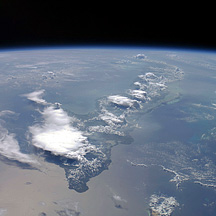
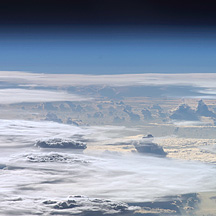
Astronauts and cosmonauts have taken thousands of photographs of the Earth, including Mt. Everest (left), Cuba (center), and clouds over South America (right). (NASA astronaut photographs ISS008-E-6146, ISS017-E-14060, and ISS017-E-13859.)
Apart from letting humanity see Earth differently than ever before, the view from space has also expanded our understanding of how the planet works, and just in time to grasp the impact humanity is having on the planet and its climate system, says Sellers. For the first time, we see our planet as a whole, a system of intricately connected parts that interact—and can be perturbed—in ways humans had not previously glimpsed. For example, the view from space was necessary to understand how much carbon moves through ocean and land plants every year during photosynthesis, says Sellers. “You need a global view to understand global processes like the carbon cycle.”
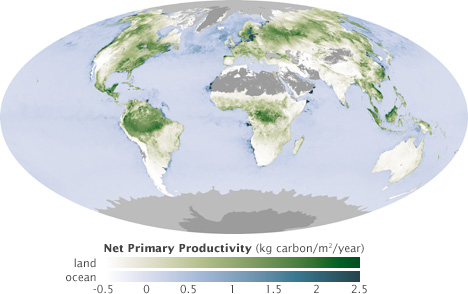
Moustafa T Chahine
AIRS/Aqua Science Team Leader, Senior Research Scientist
NASA’s Jet Propulsion Laboratory
We view Earth now as a planet, not unlike Mars or Venus. Prior to the advent of space exploration, we could only look at the planets from a great distance but now robotic spacecraft like rovers and landers are enabling us to observe them up close. For Earth it was quite the opposite. Heretofore, we could only observe our immediate surroundings like lands, oceans, clouds, mountains, etc. The view from space allows us to observe the entire Earth as a planet.
Scientifically, NASA initiated the concept of “Earth System Science” to describe that the Earth’s climate system is an interactive system with many feedbacks [connections]. What happens in one part affects the rest. NASA went on to collect individual measurements like sea surface temperature, outgoing radiation, soil moisture, etc. and integrated measurements from different sounders and imagers to study the feedbacks among the various individual measurements.
My favorite image of Earth is the composite view of Earth at night, which shows the light over the USA East and West Coasts, Europe, Japan and along the Nile river. It is one of very few space observations that demonstrates “intelligent life exists on our planet.”
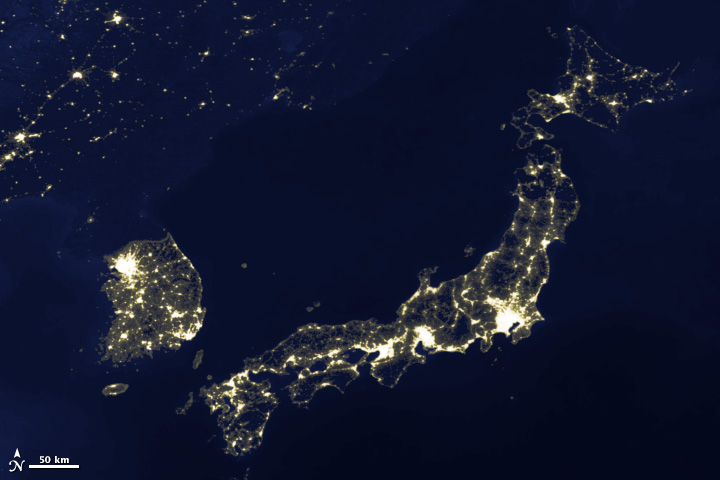
The view of city lights at night is one of very few space observations that demonstrates “intelligent life exists on our planet,” says Moustafa Chahine. On the other hand, says Marc Imhoff, “nothing shows how much impact we are having as a species on this planet better than that composite image.”
(NASA image by Robert Simmon, based on MODIS Blue Marble and Defense Meteorological Satellite Program city lights data.)
Marc Imhoff
Project Scientist for NASA’s Terra satellite
NASA Goddard Space Flight Center
We have come to realize how thin and fragile our atmosphere is, how finite our resources are, and how interconnected we are with everyone else on the planet. Scientifically, the view from space has enabled us to see how human activities can interact with natural cycles to cause important changes. For the first time, we have observed the melting of ice and sea level rise, and how ocean circulation works.
My favorite view of Earth from space is the global city lights at night. Nothing shows how much impact we are having as a species on this planet better than that composite image.